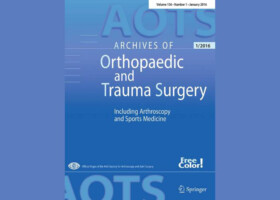
Authors:
Ravi Patel, Justin R Brown, Jon W Miles, Grant J Dornan, Christopher Bartolomei, Rony-Orijit Dey Hazra, Leslie B Vidal, Peter J Millett
Abstract:
Introduction:
Screw cut out and varus collapse are the most common complication of locked plate fixation of proximal humerus fractures. The purpose of this study was to compare dual plating and endosteal fibular allograft struts as augmentation strategies to prevent varus collapse.
Materials and methods:
A trapezoidal osteotomy was created at the metaphysis to create a 2-part proximal humerus model in 18 paired shoulder specimens. Each specimen was assigned to group A, B, or C and was fixed with either a lateral locking plate, a lateral locking plate and anterior one-third tubular plate in an orthogonal 90/90 configuration, or a lateral locking plate with intramedullary fibular strut, respectively. The specimens were stressed in axial compression to failure. Displacement, elastic limit, ultimate load, and stiffness were recorded and calculated.
Results:
There was no difference in mean cyclic displacement between the three groups (0.71 mm vs 0.89 mm vs 0.61 mm for Group A, B, C, respectively). Lateral plating demonstrated the greatest absolute and relative displacement at the elastic limit (5.3 mm ± 1.5 and 4.4 mm ± 1.3) without significance. The elastic limit or yield point was greatest for fibular allograft, Group C (1223 N ± 501 vs 1048 N ± 367 for Group B and 951 N ± 249 for Group A) without significance.
Conclusions:
Dual plating of proximal humerus fractures in a 90-90 configuration demonstrates similar biomechanical properties as endosteal fibular strut allograft. Both strategies demonstrate superior stiffness to isolated lateral locked plating.
You may request the complete study: Preventing varus collapse in proximal humerus fracture fixation: 90-90 dual plating versus endosteal fibular allograft strut

